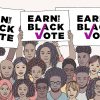Whatever we think, say or assume about the racist rant and chant of the young White men of the SAE fraternity and their female companions at the University of Oklahoma, it is neither new nor unexpected, isolated, rare or without deep social roots. Indeed, there is a history of violence, of domination, deprivation and degradation in this country against African Americans and other peoples of color which must be unflinchingly faced and taken into critical consideration whenever we seriously discuss and deal with the social disorder and humanly disabling and destructive ideology and practice of racism.
Clearly, it is past pathetic that after centuries of anti-racist struggle, education and engagement on various levels and in various venues, it takes of late a 9-10 second video to remind society that racism remains a systemic and endemic social disorder; that it is deep within the White American system and psyche; and that like viruses of various kinds, it lays permanently below the surface, waiting for an opportunity and opening to attack those vulnerable and show itself in discomforting, disabling, disfiguring and deadly ways.
One of the most instructive lessons to emerge from this anti-Black demonstration is the further discrediting of the easy assumption and often unqualified assertion that there is a post-racial America and the attendant myth that the so-called millennials—the youngest generation, are less racist and more tolerant, progressive and prone toward wanting justice and equality for everyone. Actually, their toleration, according to polls, translates as being more receptive to interracial marriage and dating, a sort of extension of the earlier limiting and self-blinding liberal assumption that taking Blacks to bed, breakfast and lunch was the key to changing racist relations in this country. But this form of tolerance, like those before it, has little or nothing to do with achieving racial justice, i.e., change in racial relations and positions of power, wealth and social status in society. For it is essentially personal rather than social, basically interactional rather than structural, and thus ends up leaving everyone, those disadvantaged and advantaged, oppressed and oppressor, essentially in place with a declaration of love, “colorblindness” and personal commitment that does not extend or last beyond its liberal and sometimes conservative advocates.
Indeed, post-racial ideology and jargon have actually tended to undermine and hinder the struggle for racial justice and the end of racist domination, deprivation and degradation. Sometimes, even young Blacks and other peoples of color judge social conditions of their people or even their families by their personal relations with Whites; by ignoring American realities of race and class, like their White generational counterparts, and arguing with and like them that having a Black President demonstrates the existence of equal opportunities between people of color and Whites. Certainly, former generations transmit their ideas, stereotypes, hatreds and hostilities to succeeding generations and without radical and consistent corrective intervention, these ideals and practices stay in place, even if they are no longer expressed in obvious and open practices of racism.
Like the current struggles against police violence and its larger systemic expressions, this racist chant and demonstration indicate clearly that White racism remains resolute and resilient, wearing an endless array of camouflage and disguises, shape-shifting like those malevolent beings in science fiction. Indeed, in this shape-shifting capacity, racism and racists show their dominance while disguising it, and demonstrate their violence by committing it under the camouflage, cover and color of law. And this happens, not only in the streets of large cities and small towns, but also in courts, schools, prisons, jails, universities and other institutions. For racism, unlike racial prejudice, is not simply hatred and hostility toward different others, but the capacity and process of turning that hatred and hostility into social policy and socially sanctioned practice.
So, no, this was no accidental mixture of ignorance, alcohol and youth being chemically-relaxed and lost in the moment. They are heirs of their history, and supporters of that which came before them in the racialized and racist frat fantasy land they created for themselves of “Black-face functions”, “jungle parties”, “auctions of the enslaved”, “Cripsmas Christmas parties”, “Compton cookouts” and various other racist pranks and pretensions of racial superiority. They had taken their bus ride boozing, tuxedoed-up and talking White trash, encouraging their women to join them and stand or stoop by their men. And they fell into a song of celebration of themselves at the expense of Black would-be pledges, vowing to never allow them to be members and asserting that you can hang them from a tree, but no “n” will never be a member of SAE fraternity.
Furthermore, they smiled and laughed as they sang and chanted, calling up memories of the history of the lynching of Black people, especially Black men, in former times. Then as now, there were the women, there along with their children for this shared White communal blood ritual of torture and murder, of battering and of burning, boiling and skinning alive, and of hanging and cutting off and preserving penis and testicles in a prehistoric ritual of capturing the enemies manhood and strength. Likewise, for this brutally insensitive, hurtful and threatening anti-Black action to happen in Oklahoma also calls to mind the savage sacking and burning of Black Tulsa in 1921, the merciless murder of hundreds, if not thousands, of Black people, and leaving in its wake thousands of wounded, homeless, horrified and terrified victims.
This is the American historical and current reality we are compelled to deal with and it suggests and even urges that we put aside pathetic and self-disabling myths of post-racial millennials and American society and deal decisively with the race and class realities of America. And in this urgent struggle against racism, we must not conveniently focus on a single White fraternity or even all of them, but must also call into question the climate and conditions on campus and in society which lay the basis and perpetuate the structural conditions for these ideas and practices to remain rooted and resilient.
In addition to customary diversity discussion on campus after such racist events, it’s important to make an ongoing commitment to provide adequate budget, policies and programs directed toward capacity building and climate change. This means initiatives directed toward increased admission and retention of Black students and increased hiring of Black faculty, staff and administrators as well as initiatives for the sustainment and advancement of Black and other ethnic studies departments and programs. And in society, there is no alternative to righteous and relentless struggle that involves education, mobilization, organization, confrontation and radical transformation of persons, peoples, campuses and society. Anything less is at best a band-aid and at worst, the covering up a festering and infectious wound that can do nothing except destroy the health, well-being and future of the people and society who let it go untreated.
Dr. Maulana Karenga, Professor and Chair of Africana Studies, California State University-Long Beach; Executive Director, African American Cultural Center (Us); Creator of Kwanzaa; and author of Kwanzaa: A Celebration of Family, Community and Culture and Introduction to Black Studies, 4th Edition, www.OfficialKwanzaaWebsite.org; www.MaulanaKarenga.org.
03-16-15















